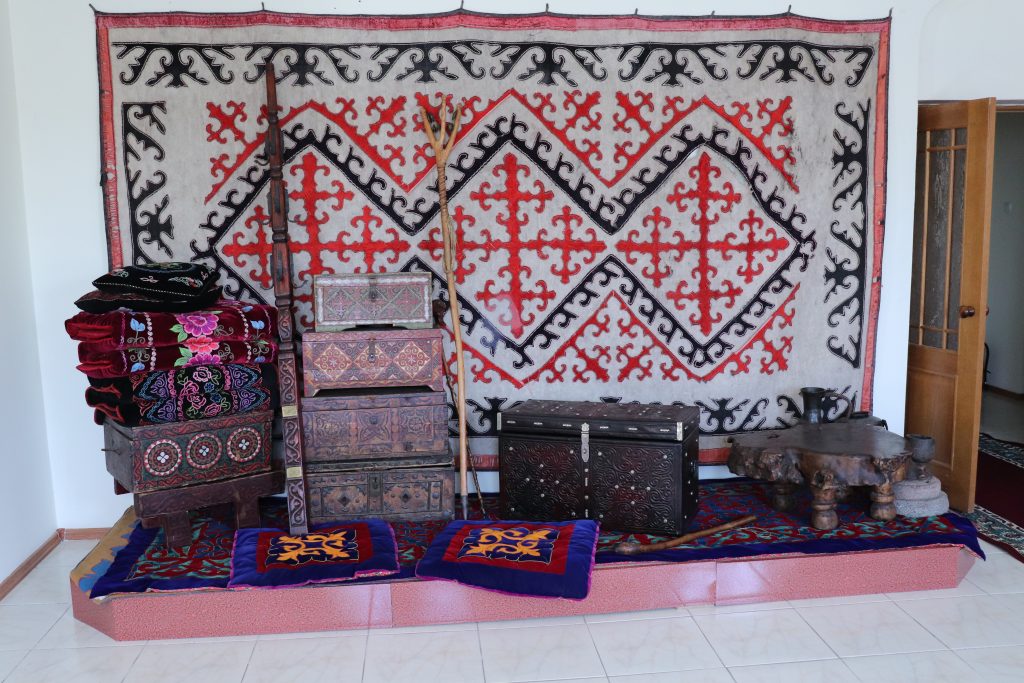




A special place in the yurt was occupied by the “sandyq” (chest).
According to Sh.Zh. Tokhtabaeva, every vessel, including the chest, “was understood as cavities of female hypostasis” [6, p. 265]. This is also underlined in the birth ritual of the Kazakhs: During the first contraction, it was customary to open the chest to facilitate labor.
Chests of various sizes together with bedding (zhük) were placed on the most honorable in the yurt – tör. They are an obligatory part of the dowry of the Kazakh bride, in which her dowry was collected long before the wedding. The wedding chest occurs in the rites of many peoples. Among the Mordovians, for example, there was a ceremony of placing the chest, which was first cleansed of the “impure force” with a candle, salt, etc., and then money, food and dishes were placed on the bottom – “May the chest all life was not empty, so the youth lived richly”. Similar functions were performed by the wedding chests of the Slavs. Russian wedding chests were, according to N.N. Goncharova [1] painted with certain picturesque symbols – texts depicting pretentious or edifying actions, archaic folklore, biblical actions, actions with “symbols and emblems”, plant ornaments, etc.The chest of the Kazakh bride is the “key” in the ritual “sandyq – ashar” (opening of the chest ), which includes the presentation of the dowry bride with obligatory distribution of cloth cuttings – zhyrtys, to the women present. Here the zhyrtys symbolizes participation in a solemn event for the purpose of its implementation in each family.
Among the Kazakhs, chests were made in different sizes depending on their purpose. Almost to this day Kazakh women keep in their chests pieces of expensive fabrics, ceremonial clothes, silver and other expensive things. The indication of the sacred character of the chest is the traditional blessing: “Sandyq kümiske tola bersin!” (“May your chest shall be constantly filled with silver!”), which symbolized prosperity and wealth, as well as a significant family heirloom. The chest also served as a “guardian” of a power (positive or negative). In one version of the heroic epic “Narty” it is reported that the sword of the Cyclops (Emegen) is kept in a black chest, and in other epics there are motifs with a golden chest in which the Book of Destiny is kept.


